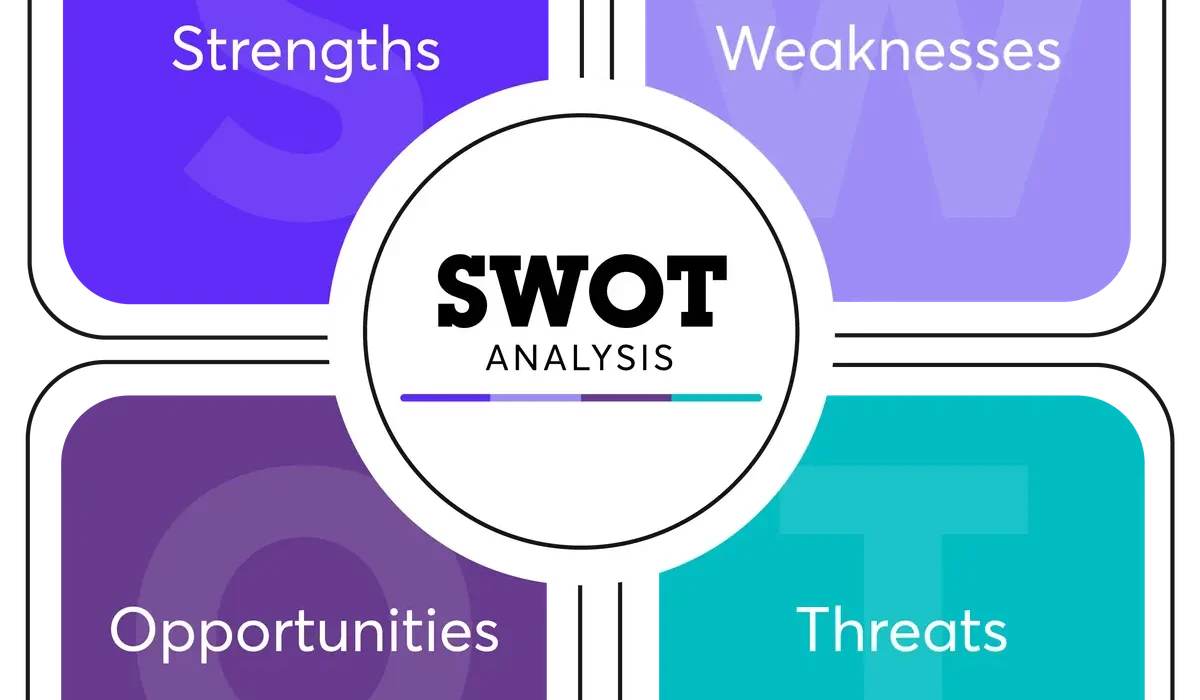Mastering SWOT Analysis: A Step-by-Step Guide for Startups

Introduction: Understanding SWOT Analysis
For startups, it may be just that one element of knowledge that saves them from ultimate failure in the market. SWOT analysis is an acronym for Strengths, Weaknesses, Opportunities, and Threats. It is a powerful tool businesses use to analyze different internal and external factors that impact an enterprise’s growth and development. This methodology will provide you with a simple and systematic scheme to identify points of strength and worry.
If you don’t know how you go about it, we are here to walk you through the process. After this article, you will be able to run a SWOT analysis of your startup. And then you will have what you need to make well-informed decisions while strategizing the next steps for your business.
What is SWOT Analysis?
Think of it as a tool that shows you what you are doing right and what you’re not. It goes on to tell you what you should consider doing and what you should not.
SWOT analysis is a method of strategy formulation that gives a general view of the internal strengths and weaknesses and external threats and opportunities a company faces. It ensures the division of the most essential factors in the business environment, allowing every startup to find some critical clues.
SWOT analysis, in the case of a startup, helps entrepreneurs decide where they can leverage their strengths, overcome weaknesses, avail opportunities, and nullify threats. It is a technique that will help you make informed decisions, from launching a new product to entering a new market.
Why is SWOT Analysis Important for Startups?
When you have a strong SWOT analysis of your startup, you’ll be able to:
- Comprehend risks
- Plan strategically
- Stand tall in your industry
This analysis helps identify:
- Strengths – Your core competencies
- Weaknesses – what should be improved
- Opportunities – situations around the market to be harnessed for growth.
- Threats – to place you ahead of challenges that could stifle progress.
Companies like Airbnb utilized SWOT analysis early in their operations to create a positioning in the market. And it really helped them devise strategies that eventually made them giants in the industry.
Step-by-Step Guide to Conducting a SWOT Analysis
- Identify Your Strengths
The strengths of your start-up are the things that set you apart from other competitors. Ask yourself:
- At what level does your start-up excel?
- What special skills, resources, or technologies do you have?
To find this information, you may want to brainstorm with team members and stakeholders. You may have a strong brand, a unique product, or even an extremely skilled team. Just look within yourself and your team for your strongest abilities and advantages.
- Assess Your Weaknesses
No startup completely lacks weaknesses. They may be skill gaps, resource gaps, or even market exposure.
To assess your weaknesses, consider answering these questions:
- What should we do better?
- What is holding back our growth?
Self-evaluation becomes very important in this regard. You may request candid feedback from all your stakeholders and customers. You can even conduct surveys, internal audits, or even open discussion sessions with your team for blind spots.
Your weakness could be lack of funding, poor brand recognition, or maybe outdated technology.
- Explore Opportunities
Now let’s talk about opportunites. Unlike strengths and weaknesses that are assessed within your company, an opportunity is an external factor that may enable your startup to soar.
- What kind of market trends can you exploit?
- Do the industry reports show any unmet needs that you can key into?
- Are there any lapses in your competitors’ offers?
As you might have noticed, this step will require a lot of market research. You might want to go through industry reports, keep an eye on your competitors, and stay updated on new trends or emerging customer demands. As you do these, brainstorm how your startup can meet any needs you find.
For example, increasing demand for sustainable products might unlock new market entry opportunities for a green startup.
- Recognize Threats
Threats are factors beyond your control that tend to impede your success. From economic downturns to new competitors entering the market, a threat could be anything. Yes, threats are beyond your control. However, recognizing them gives you a chance of reducing their effect on your startup.
A good question to ask would be: What are some exogenous risks that could conceivably harm your startup?
For you to determine threats, you have to understand the competitive landscape.
- Monitor the moves of your competitors
- Analyze changes in consumer behavior; and
- Stay tuned into any changes in regulations. For example, increasing regulation may demand new costs, or a better-funded competitor may capture market share.
Putting It All Together: Creating Your SWOT Matrix
Once you’ve finally researched your findings, it’s time to organize them in a SWOT matrix. The matrix is a graphical tool to help you divide your insights into four quadrants: Strengths, Weaknesses, Opportunities, and Threats.
This matrix allows you to have all your internal and external factors side by side to comprehend better how they link to one another. Visualizing these elements creates more accessible communication of the findings to your team and helps get everyone on board with your strategic goals.
An image of a SWOT analysis
Developing a Strategic Plan Based on Your SWOT Analysis
Now that you have performed your SWOT analysis, it is time to implement moves. If you miss out on this step, your research is of no good.
So, first, you should focus on your strengths and opportunities. You can, for instance, leverage emerging trends using your relative strength.
Next, prepare a work plan to overcome weaknesses and counter threats that may create obstacles in your path.
Whenever possible, link strengths with opportunities. If, for example, your strong tech capabilities are creating a growing market for AI-driven tools, then focus on that. But while you’re at that, devise strategies to minimize or reduce weaknesses and eliminate or reduce the impact of external threats, such as economic risks, by diversifying your revenue streams.
Conclusion: The Ongoing Nature of SWOT Analysis
A SWOT analysis is not a set-and-forget activity. As your startup begins to scale, both the internal factors and external elements that impact your business will morph. Revisit your SWOT analysis occasionally to keep you on your toes and your strategies fresh.
By using SWOT analysis in your continuing strategic planning process, you will know how to adjust to changes and prevent challenges before they happen. You will also make decisions that are wiser and better-informed.
Ready to get started? Perform your SWOT analysis today and apply it as an integral component of your business strategy.









